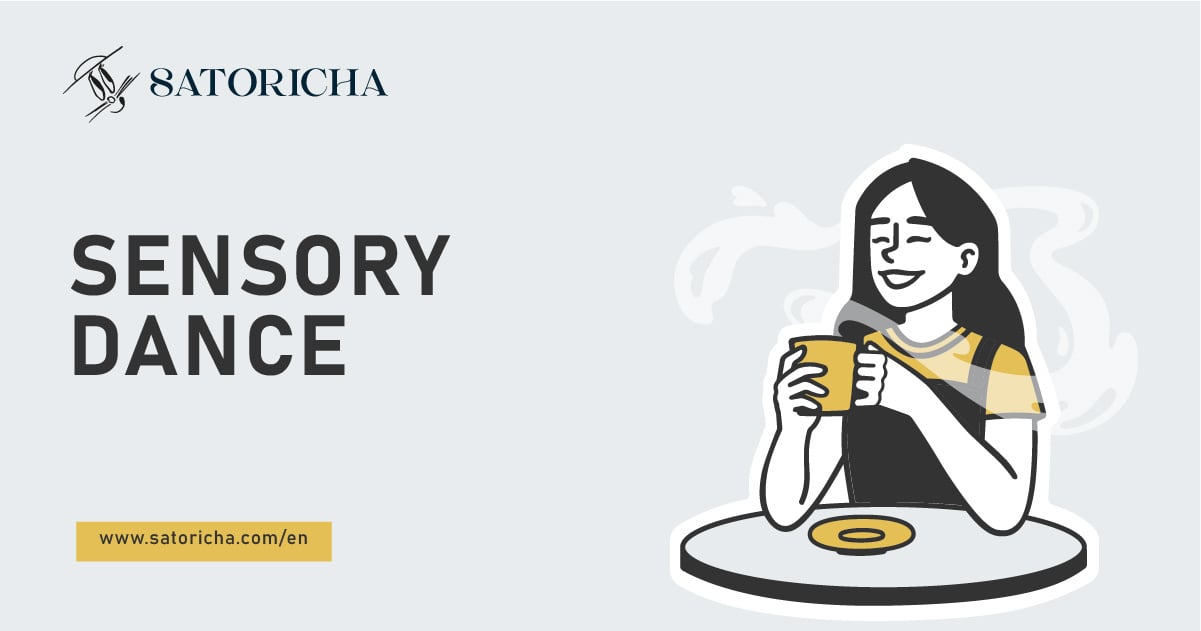Aromas and fragrances, music and its volume, and the comfort of the environment are key factors influencing your purchasing decisions and how long you choose to stay in a place.
Why does this have such an impact? Because our five senses are essential in perceiving and understanding the world around us. They provide us with extra information that we unconsciously collect and store, carrying it with us throughout our journey in life.
In their song Stressed Out, the band Twenty-One Pilots has a lyric that says, "Sometimes a certain smell will take me back to when I was young." Let me tell you, this isn't something that rhymes; it's something we all experience in our day-to-day lives. It's called Sensory Memory.
But let's start with the basics: our five senses—hearing, touch, sight, smell, and taste. And no, you don't just use taste and smell when eating and drinking; you use all of them.
Sense of Hearing: How do you use your sense of hearing when eating or drinking? Some examples illustrate how this sense plays an important role.
"Recommend me a place" – You'll likely ask for recommendations when you want to try something new or visit a new place. Whether good or bad, these recommendations influence your decision to try something or visit the place.
"We close at 6:00 pm" – We've all been guilty of arriving at a place right before closing time. Most of the time, we're still welcomed in with a smile. The problem arises when we get caught up in conversation and lose track of time. Establishments often start cleaning up—making it obvious with the sounds of dishes, tables, etc.—and the music volume or playlist might shift, so we decide to leave because it's no longer comfortable.
But let's not be too extreme. Sometimes, we arrive at a place where the sound of conversations is overwhelming, the music is too loud, or the genre doesn't match the establishment's vibe. In any case, we might decide to leave because it's uncomfortable.
Sense of Sight: "We eat with our eyes first." - There's a reason behind sayings like this. The visual presentation of food is essential to our experience and appetite.
In fact, it's so crucial that there's something in gastronomy called plating, which refers to the arrangement of food and accompaniments on a plate in an appealing way that also ensures ease of eating.
Some types of plating include:
-
- Rhythmic Plating
- Symmetrical Plating
- Asymmetrical Plating
- Rule of Thirds Plating
These are just a few examples, and lighting also plays a role in how we experience food visually.
Sense of Touch: Don't think you need to physically touch your food with your hands for this sense to be involved. In reality, touch plays its role inside your mouth, for example:
-
- Eating a crunchy toast
- Savoring the tortilla that accompanies your soup
- Eating reheated (soft) fries 💀
Ultimately, the sense of touch related to food and drinks depends on textures—something we'll cover in a future post.
Sense of Smell: When teaching kids about the five senses, it's common to demonstrate this sense by having them pinch their noses while eating, so they can notice how the flavor diminishes or disappears entirely.
If we step out of the classroom, the reason for this is our retronasal perception.
There are two types of nasal perception:
- Retronasal perception: This is any aroma or fragrance perceived through the back of the mouth as food or drink moves along. The gases and molecules change as they travel through our mouths. For example, you take a sip of whiskey, and as you savor it, you notice salty and smoky notes, even a lingering aftertaste.
- Orthonasal perception: This refers to aromas or fragrances detected directly through the nostrils. For example, when you smell a glass of whiskey and pick up on the woodsy aromas—that's orthonasal perception at work.
Sense of Taste: It's more complex than people realize. Taste segments flavors and creates "files" in our sensory memory. Taste works with five basic flavors:
- Bitter, perceived at the back of the tongue.
- Sour, detected on the left and right sides of the tongue.
- Sweet, felt at the tip of the tongue, roughly the size of a fingertip.
- Salty, noticed at the front and sides of the tongue.
There's also one more flavor, which definition and concept vary between East and West:
Umami: If you ask someone in coffee or related fields what umami is, they might say, "It's the definition of the best taste of something," "A flavor similar to tomato that feels savory," or "A flavor that's like eating grilled meat." Ultimately, these definitions can confuse when trying to identify it in food or drink. Imagine, for example, you're tasting a Japanese green tea, Sencha, and you detect umami. But in your head, you might think, "Is this supposed to taste like grilled meat?" It's not wrong because that's how your sensory memory recorded it, though others who try the same tea might not perceive it the same way.
In the end, umami is one of the basic tastes, but it takes a lot of work to define. Here's how I try to identify it, though this is not an absolute truth: For me, umami starts with a mild taste—by "mild," I don't mean bland, but rather smooth—and gradually transitions to a more intense flavor. This intensity feels almost like the texture of whipped cream, and even after the food or drink is gone, you still feel the fullness of the flavor lingering.
I'll likely dive deeper into umami in another post because explaining it fully in 305 words is impossible. But for now, you have a general idea of what it is.
Until next time!
Satoricha ~

Comments